The lake that reveals humanity’s birth
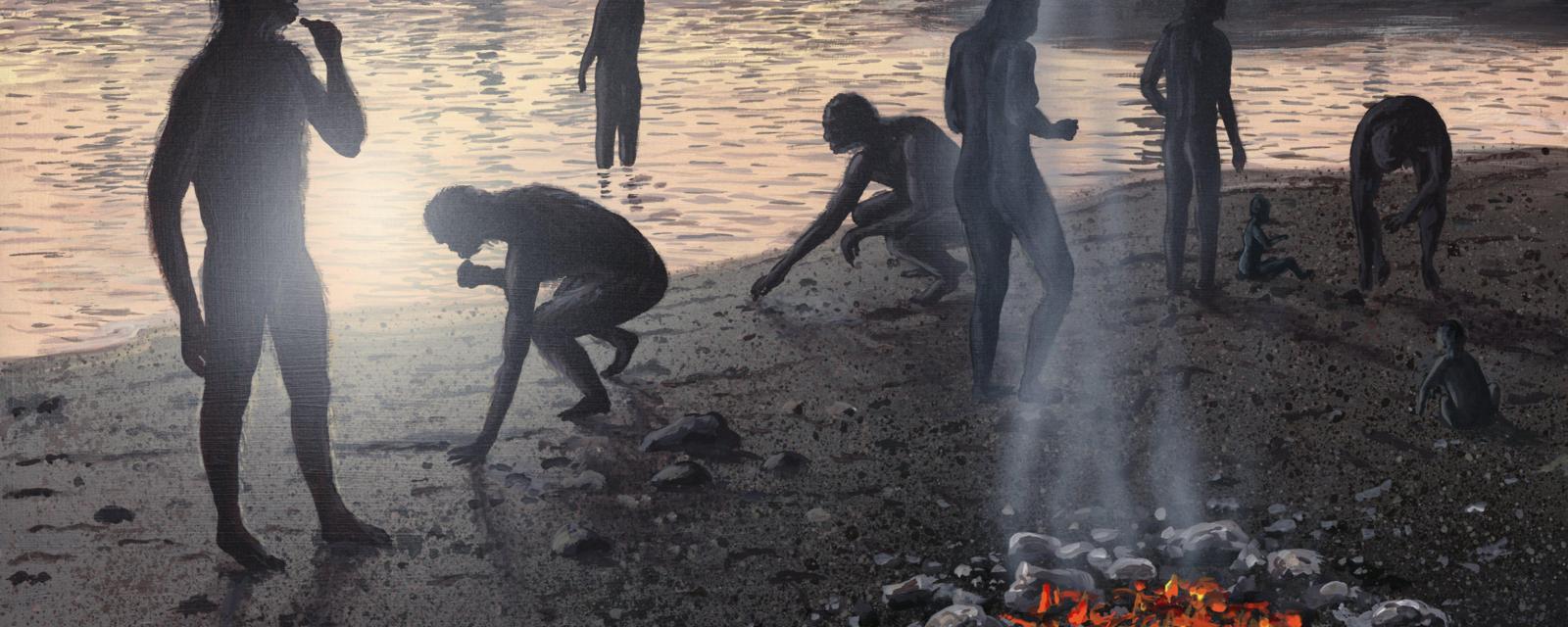

Early human settlement. Artwork of a group of ^IHomo Erectus^i humans gathered around a fire during the Late Pleistocene period (130,000 to 10,000 years ago) at what is now Lake Turkana in Kenya.
Our ancient human ancestors were an elusive lot. Their remains are literally thin on the ground, and even when fossils are unearthed it is rare for them to be complete.
Sometimes they must be pieced together from dozens of fragments.
That is why a staggering find in 1984 excited the entire field, and continues to do so today over 30 years later.
It was a skeleton of a young boy, discovered at Lake Turkana in the deserts of northern Kenya. He died when he was about eight years old and his bones sank into the sediments of the lake, where they were preserved for 1.5 million years. He was, and is, the most complete early-human fossil ever discovered.
Yet "Turkana Boy" is just one of many early human fossils discovered near the lake.
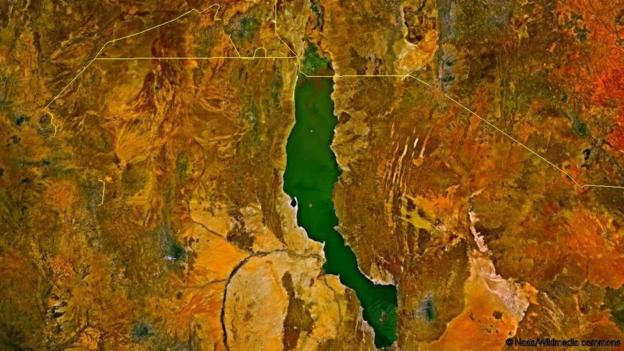
Together they span four million years of human evolution. This one spot has told us a huge amount about where we came from and how our ancestors lived.
Today Lake Turkana lies in the midst of a dry, hostile desert environment. But this was not always the case.
About two million years ago, the lake was much larger and the surrounding area was greener. Since then, rapid changes in the climate have periodically caused the lake to shrink, and occasionally it has disappeared altogether.
Before long fossils of numerous species were tumbling out of the ground
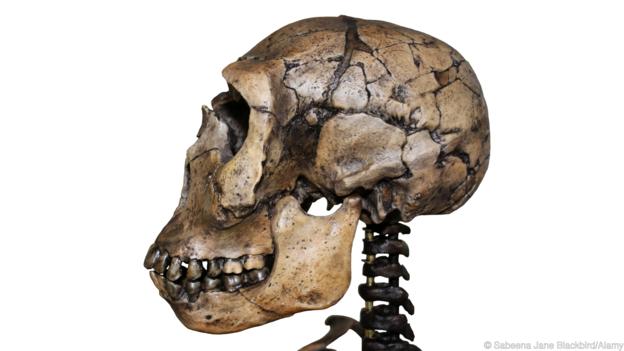
D11P21 Side View Of Homo ergaster Skull Nariokotome Boy
During the wetter times, it was an ideal place for early humans to live, and when they died it was a perfect place for their remains to fossilise. That's because Lake Turkana lies in a volcanic area, where tectonic activity can move Earth's crust and create new layers. It is within these layers that fossils from different time periods are found.
"Those are all great circumstances where you can have bones that get buried in the sand and that becomes sandstone," says Fred Spoor of University College London in the UK. Periods of heavy rainfall have since eroded many of these layers, exposing the fossils more clearly.
Excavations at the lake started in 1968 when Richard Leakey of the Turkana Basin Institute led a group to the eastern side, known as the Koobi Fora. It was an enormous area, but aerial views had suggested that there were lots of fossils to be found.
"My idea was to start at one end and work our way to the other end," says Leakey. The first few years were "a bit of an adventure", but before long fossils of numerous species "were tumbling out of the ground".
Humans used to be a diverse group of species, not just one as we are today
In 1972, Leakey's team uncovered the skull and some limb bones of a 1.9 million-year-old Homo rudolfensis, known as "skull 1470".
The discovery reinforced an idea that was emerging at the time: that there was not a single line of early humans, but multiple lineages. It was already known that three other species were living in Africa around the same time: H. habilis, H. erectus and Paranthropus boisei. H. rudolfensis added to this diversity.
In other words, humans used to be a diverse group of species, not just one as we are today. Later finds from Koobi Fora suggest that the three Homo species coexisted between 1.78 and 1.98 million years ago.
But it was not until the discovery of Turkana Boy, also known as Nariokotome Boy, that we began to learn about perhaps the most important of these species: H. erectus.
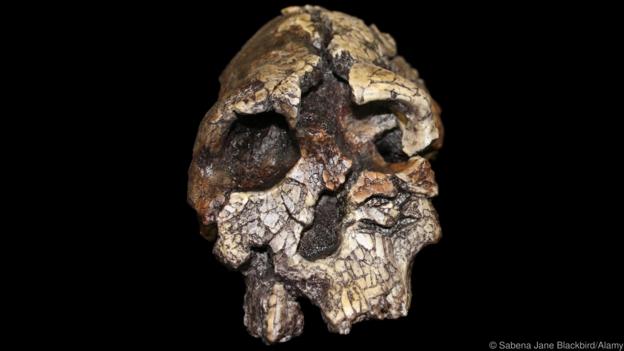
D0E57D Kenyanthropus platyops
"Turkana Boy is one of the monumentally important fossils that radiates new questions about human evolution," says paleoanthropologist John Shea of Stony Brook University in New York, US.
For one thing, H. erectus are thought to be our direct ancestors. They were the first hominins to migrate out of Africa, spreading into Europe and Asia.
It's a step in the direction of the way we humans walk around
In some ways they were strikingly similar to us. They had significantly bigger brains than the slightly older H. habilis, and were much taller.
What's more, Turkana Boy revealed that his species walked more like us than older hominins did. He centred his weight over his pelvis as he walked, just like us. He also had arched feet and a relatively long stride.
Turkana Boy was also able to carry things in his free hands while walking.
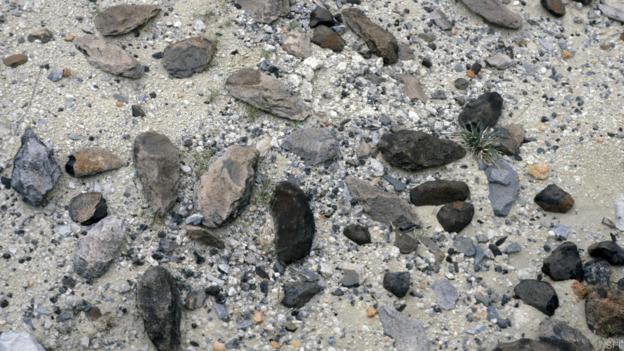
Acheulian hand axes, Kenya, Africa
"It's a step in the direction of the way we humans walk around, away from the way other ancestral hominins and primates moved around," says Shea.
"He would have been a good endurance runner and very good at carrying things. If you're able to run, you can chase, so what were they chasing? What were they carrying?"
Other studies offer some clues.
His family may have been carrying hunting tools like spears. The anatomy of their hands strongly suggests they could do so. Spears do not fossilise, but a 2013 study suggested that H. erectus had evolved the ability to throw.
In contrast, our closest ape relatives have very little throwing power. Our more ape-like ancestors, who spent more of their time in trees, were probably similarly bad at throwing.
This suggests that H. erectus could hunt more intensively than older species, helping them to expand out of their territory.
That would have been useful, because during Turkana Boy's time the climate was extremely variable. The forests his ancestors had thrived in began to change into more open grasslands, leaving early humans fewer places to hide from large predators.
These hominins faced a choice, says Shea: retreat to the remaining trees, or deal with these threats head-on. They seem to have chosen the latter.
They may have found some safety in numbers. Groups that live, work and hunt together are less vulnerable than lone individuals. This may have given H. erectus the drive they needed to become more social.
There is some evidence that they shared information and worked in teams.
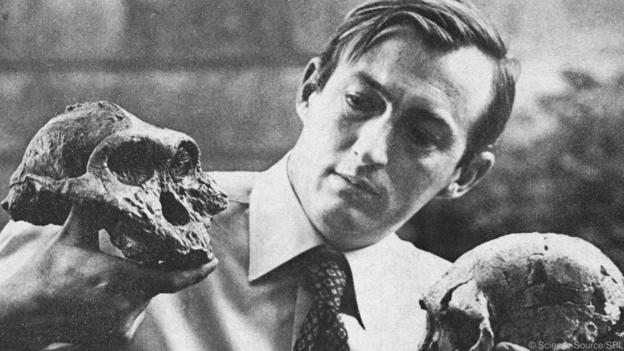
Archaeologist and naturalist Richard Erskine Frere Leakey, September 4,1978.
Stone tools called Acheulean hand-axes date from this time. They have been found throughout Africa and in other parts of the world. This suggests that early humans could both make them and share the ability with others.
Hand-axes were involved in dismembering and chopping limbs apart and cutting through the flesh
The earliest known Acheulean hand-axes were discovered near Lake Turkana in 2011. They are 1.76 million years old and were probably made by H. erectus.
Once the Acheulean technology emerged, it persisted for over a million years, says Ignacio de la Torre of University College London in the UK. For good reason: the hand-axes were multi-functional tools, the Stone Age equivalent of the Swiss army knife.
For example, they would have been ideal for butchering animal carcasses. "It is a reasonable explanation that hand-axes were involved in dismembering and chopping limbs apart and cutting through the flesh," says de la Torre.
Given how long they persisted, it must have been easy to teach others how to make them.
That does not mean H. erectus had language. Shea has taught about 500 students to make similar stone tools, and they can easily teach others without talking. Still, they are harder to create than the Oldowan stone flints attributed to the smaller-brained H. habilis.
Lake Turkana has also helped reveal what was happening even earlier in human evolution, before the Homo genus arose.
In 1974, researchers in Ethiopia discovered a 3.2-million-year-old fossil
Australopithecus afarensis, nicknamed "Lucy". Lucy's species was immediately hailed as a key contender for our direct ancestor.
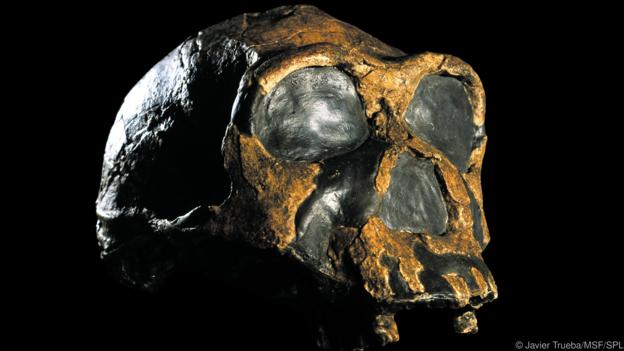
Homo ergaster skull (KNM-ER 3733). This fossil specimen dates from around 1.8 million years ago, and was discovered in 1975 in Koobi Fora, on the eastern shore of Lake Turkana, Kenya. This well-preserved fossil skull is that of a mature female. H. ergaster is an extinct hominin species from the same genus as modern humans.
"When Lucy was found there was very little known earlier. All the specimens were known after the age of Lucy," paleoanthropologist Meave Leakey told the Royal Society in October 2015.
"The obvious interpretation of that was that there was nothing happening before [Lucy]," Leakey added. There was a single lineage descending from apes through to Lucy, "and then out pops our immediate ancestors". To her, that did not make sense.
So Meave Leakey made it her mission to find fossils of other species from the same period as Lucy. That meant going back to Lake Turkana.
Her team found fossils on the western shore of lake that demonstrated there was "diversity at the age of Lucy".
In the 1990s, her team discovered a possible ancestor of Lucy's species, known as A. anamensis. This was the oldest species known from Lake Turkana, having lived about four million years ago.
There were now several contenders for the common ancestor
A few years later, again on the west of the lake, her team discovered another new species called Kenyanthropus platyops, or "flat-faced man". This species lived 3.5 million years ago, when other members of Lucy's species also roamed.
That meant there were now several contenders for "the common ancestor" of Homo, and largely killed off the idea that humans evolved on a single line.
Lake Turkana shows no signs of losing its status as a key source of fossils. A recent find has once again shaken up our ideas about what our ancient ancestors could do.
In the summer of 2015, researchers announced the discovery of the oldest known stone tools, dating to 3.3 million years ago. It had been assumed that only Homo species could make stone tools, but the tools were older than any known Homo fossils, suggesting that older species like A. afarensis or K. platyops could also make stone tools.
"We didn’t think they were intelligent and skilled enough to be able to make the stone tools," says de la Torre.
It was a crucial discovery. There was thought to be a "substantial link between the emergence of humans (Homo) and the emergence of technology", says de la Torre, but it now seems this is not necessarily true.
When you look at all these finds together, it is abundantly clear that Lake Turkana has played a pivotal role in our understanding of human evolution. But that is not to say the area was particularly significant for the early humans themselves.
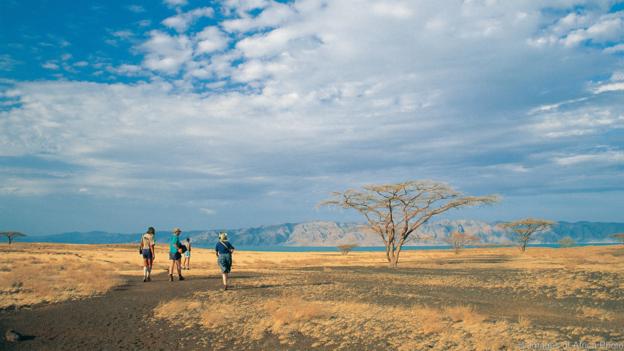
ABMNXJ Desolate volcanic landscape of South Island Lake Turkana Northern Kenya
Lake Turkana was simply an ideal place for fossils to be preserved, says Spoor. "That doesn't mean human evolution doesn't happen everywhere else in Africa."
What you're seeing is Turkana connects the dots
For instance, many of our ancestors might have lived in rainforests, where the ground is too acidic for fossils to survive. "Absence of evidence does not mean evidence of absence," says Spoor.
But that does not diminish the importance of the site itself.
"To some degree, what you're seeing is Turkana connects the dots," says Shea. It allows us to see multiple species that lived millions of years apart, and compare them.
We are lucky that this one area was a geological trap, allowing us a glimpse into the lives of so many of the early humans that preceded us on Earth.
Политика конфиденциальности | Правила пользования сайтом









